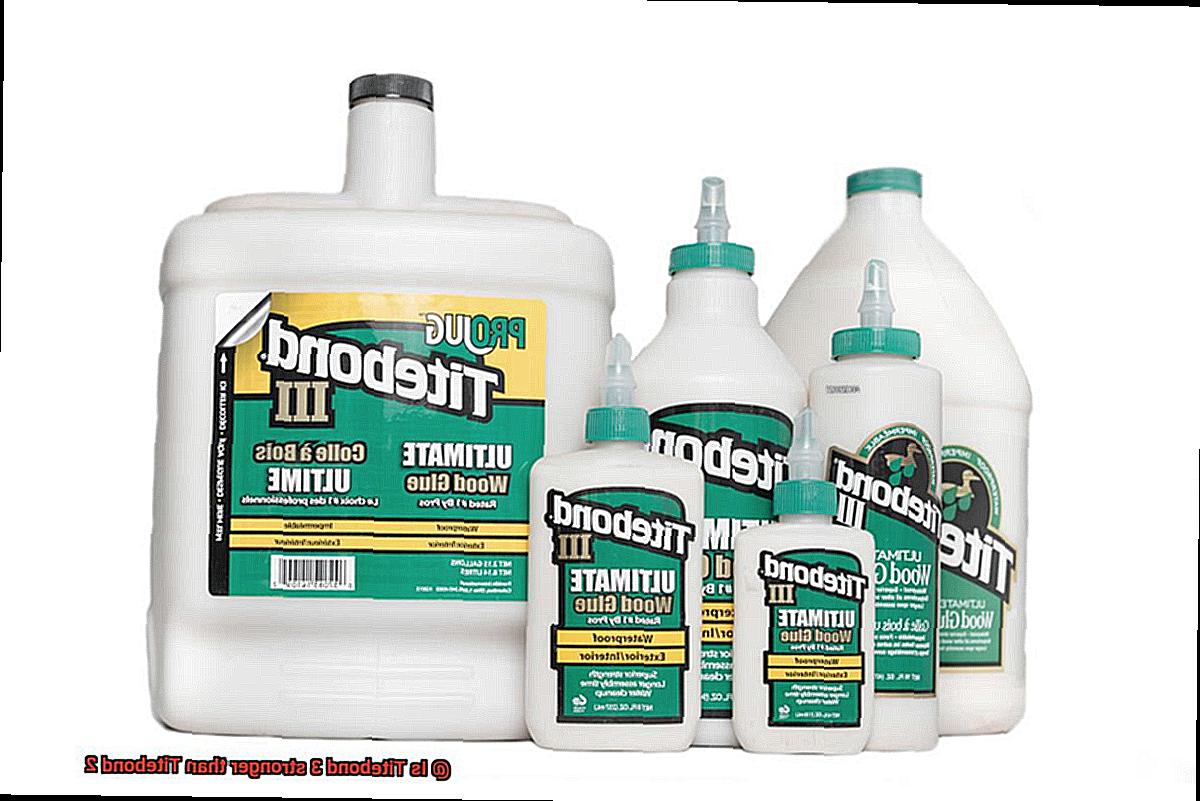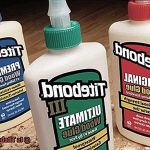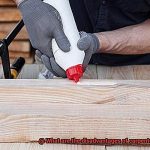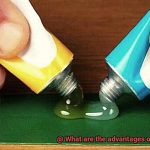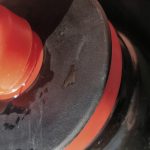Welcome to our blog post, where we embark on a thrilling journey into the world of woodworking adhesives.
Today, we’re tackling a question that has puzzled craftsmen for ages: Is Titebond 3 mightier than Titebond 2? If you’re unfamiliar, Titebond is the holy grail of wood glues, renowned for its top-notch quality.
Both Titebond 3 and Titebond 2 possess impressive bonding powers, but they each have their own unique characteristics. In this post, we’ll uncover the secrets of these glues, dissect their strengths and weaknesses, and equip you with the knowledge to decide which one reigns supreme in your woodworking endeavors.
So strap in and get ready to unlock the answer to this burning question once and for all.
What is Titebond 3?
Contents
When it comes to woodworking and construction, having the right adhesive is crucial. Titebond 3 has become a go-to glue for many professionals and DIY enthusiasts due to its exceptional features and benefits.
Firstly, Titebond 3 is renowned for its outstanding water resistance. Unlike other adhesives, it can withstand exposure to moisture without compromising its bond strength. This makes it perfect for outdoor applications or projects that may come into contact with water, such as outdoor furniture or garden structures.
In addition, Titebond 3 boasts a long open time, setting it apart from other glues. This means that after application, the adhesive remains workable for a longer period. It allows users to assemble and adjust their project pieces before the adhesive fully sets, ensuring precise positioning and reducing the risk of errors.
Moreover, Titebond 3 is highly versatile. It can bond a wide range of materials including wood, metal, ceramics, and plastic. This versatility makes it a top choice for various woodworking and construction projects.
What sets Titebond 3 apart is its exceptional holding power. It forms a bond that is stronger than the wood itself, ensuring long-lasting durability. This strength is especially important in applications where the bonded pieces will be subjected to stress or heavy loads.
Safety is always a priority when working with adhesives, and Titebond 3 delivers on that front too. It is non-toxic and meets industry standards for low VOC emissions. This makes it an environmentally friendly option that won’t pose any health risks to you or your loved ones.
What is Titebond 2?
Renowned for its strength, versatility, and rapid setting time, this high-performance wood glue ensures secure bonds and minimizes downtime. This article explores the remarkable features and benefits of Titebond 2, empowering you to make an informed decision for your woodworking needs.
Unparalleled Bond Strength:
Titebond 2 is formulated to deliver a robust and long-lasting bond between wood surfaces. Whether you’re crafting furniture, cabinetry, or trim work, this glue guarantees that your pieces remain firmly intact even under heavy stress or pressure. Bid farewell to concerns about project failures, as Titebond 2 has got you covered.
Efficient Setting Time:
In the world of woodworking, time is of the essence. Recognizing this, Titebond 2 boasts a fast setting time that minimizes waiting periods for glue to dry. Instead, you can seamlessly continue working on your masterpiece without unnecessary delays. Remember to clamp glued surfaces during the curing process to achieve the strongest bond possible.
Reliable Water Resistance:
While primarily designed for interior applications, Titebond 2 offers commendable water resistance. Occasional exposure to water or humidity will not compromise its adhesive properties. However, it is important to note that Titebond 2 may not be suitable for fully submerged or outdoor applications where continual moisture exposure is expected.
Application Tips:
Applying Titebond 2 is effortless. Its liquid form allows for easy application using a brush or roller. Before gluing, ensure that the surfaces are clean and free from dust or debris to optimize bonding. Additionally, clamping the glued surfaces during drying enhances bond strength.
Factors Affecting Glue Strength
Achieving strong glue joints is essential for ensuring the durability and longevity of woodworking projects. The strength of the bond can be greatly impacted by various factors, particularly when using popular wood glues such as Titebond 3 and Titebond In this article, we will delve deeper into these factors and explore how they affect the performance of these adhesives.
- Adhesive Type: The type of adhesive used is a crucial factor in determining glue strength. Titebond 3 is a waterproof adhesive, making it ideal for outdoor applications or areas with high humidity. On the other hand, Titebond 2 is water-resistant, providing good resistance to water but not as much as Titebond If you are working on a project that requires increased resistance to moisture, Titebond 3 is the better choice.
- Surface Preparation: Proper surface preparation is key to achieving strong glue joints. Both Titebond 3 and Titebond 2 require clean and smooth surfaces for optimal bonding. Any contaminants such as dust, grease, or old adhesive residues should be removed before applying the glue. Additionally, roughening the surface slightly can improve the mechanical interlocking between the glue and the substrate, enhancing overall bond strength.
- Clamping Pressure: Applying adequate clamping pressure during the curing process is essential for ensuring a strong bond. The pressure helps to squeeze out any excess glue and ensures intimate contact between the adhesive and the surfaces being bonded. Both Titebond 3 and Titebond 2 require sufficient clamping pressure, as specified by the manufacturer, to achieve optimal results. Insufficient pressure can lead to weak glue joints and compromised strength.
- Curing Time: Allowing sufficient time for the glue to cure is crucial for achieving maximum bond strength. While both Titebond 3 and Titebond 2 have relatively short initial tack times (the time it takes for the glue to grip), they require different curing times to reach their full strength. It is important to follow the manufacturer’s recommendations regarding curing time to ensure that the adhesive has fully cured and developed its maximum strength.
- Temperature and Humidity: Temperature and humidity can affect the performance of wood glues. Extreme temperatures, either too high or too low, can hinder the curing process and weaken the bond. Similarly, high humidity levels can slow down the drying time and affect the overall strength of the glue joint. It is important to use Titebond 3 and Titebond 2 within the recommended temperature and humidity ranges for optimal results.

Open Time Comparison
When it comes to choosing the right glue for your woodworking projects, one important factor to consider is the open time. Open time refers to the amount of time the glue remains workable after it has been applied before it starts to set and create a bond. In this article, we will compare and contrast the open times of Titebond 3 and Titebond 2 glues.
Titebond 3 is renowned for its extended open time compared to Titebond This means that Titebond 3 allows for more flexibility and gives users more time to assemble and position their workpieces before the glue starts to set. This is especially advantageous for projects that require precise alignment or when working with larger pieces of wood that may require more time for adjustments.
On the other hand, Titebond 2 has a shorter open time compared to Titebond While it still provides enough time for most woodworking applications, it may not be as forgiving when it comes to making adjustments or repositioning workpieces. It is crucial to plan and work efficiently when using Titebond 2 to ensure that the glue is applied and the pieces are assembled before it starts to set.
The extended open time of Titebond 3 can also be beneficial in situations where clamping time may be longer. This allows users to apply the glue and assemble the pieces without rushing or worrying about the glue drying too quickly before clamping. However, it is still important to follow the recommended clamping time provided by the manufacturer for optimal bond strength.
Both Titebond 3 and Titebond 2 offer excellent bond strength once fully cured. Therefore, the choice between the two may ultimately depend on the specific needs of your project and personal preferences. If you require more time for assembly or adjustments, Titebond 3 with its extended open time would be a better choice. However, if you are working on a project with a shorter assembly time, Titebond 2 can still provide a strong and reliable bond.
Bond Strength Comparison
In this exploration of bond strength, we will compare two popular wood glues: Titebond 3 and Titebond So grab your favorite woodworking tool and let’s dive into the fascinating world of glue.
Bond strength is the glue’s ability to firmly hold two surfaces together and resist separation under stress. It is what keeps your precious woodworking masterpiece from falling apart. When comparing Titebond 3 and Titebond 2, there are several factors to consider. Let’s break it down:
- Type of wood: Different woods have unique characteristics that can affect bond strength. Both Titebond 3 and Titebond 2 work well with most types of wood, but it is always a good idea to test the glue on a small inconspicuous area before committing to a larger project.
- Surface preparation: A clean and properly prepared surface is crucial for a strong bond. Remove any dust, dirt, or old glue residue before applying either Titebond 3 or Titebond 2.
- Application method: Both glues can be applied using a brush, roller, or by spreading it directly onto the surfaces. The key is to apply an even layer of glue to both surfaces that need to be bonded.
- Curing time: The curing time refers to how long it takes for the glue to fully dry and create a strong bond. Titebond 3 has a longer open time, allowing for more flexibility in positioning and adjusting workpieces before it sets. Titebond 2 has a shorter open time, requiring efficient planning and swift execution.
- Other considerations: While bond strength is crucial, other factors such as drying time, ease of use, cost, and specific project requirements should also be taken into account when choosing the right wood glue.
Ultimately, the choice between Titebond 3 and Titebond 2 depends on your specific project needs and preferences. If you’re working on an outdoor project or something that may be exposed to moisture, Titebond 3’s waterproof properties make it the obvious choice. However, if you’re looking for a strong and reliable bond for indoor projects, Titebond 2 with its good water resistance is a great option.
Water Resistance of Titebond 3 vs Titebond 2
Titebond 3 and Titebond 2 are two adhesive glues that are highly regarded in the woodworking and carpentry world. While both of these glues are known for their adhesive strength, they do differ in terms of their water resistance capabilities.
Titebond 3 is the heavyweight champion when it comes to water resistance. It is specifically formulated for applications that will be exposed to moisture or water. This makes it the go-to choice for outdoor projects or any project that may come into contact with water. Whether you’re building furniture for your patio or deck, Titebond 3 has got you covered.
The secret to Titebond 3’s exceptional water resistance lies in its advanced polymer technology. This technology allows it to form a strong bond that can withstand prolonged exposure to water without compromising its strength or integrity. It surpasses industry standards for water resistance, providing a higher level of protection against water damage.
On the other hand, Titebond 2 also offers some level of water resistance but falls short of the robustness of Titebond It is more suitable for indoor projects or applications where occasional exposure to water may occur, but not continuous contact with moisture.
Both Titebond 3 and Titebond 2 are ANSI/HPVA Type I waterproof glues, meaning they meet industry standards for water resistance. However, if you’re looking for top-notch protection against water damage, Titebond 3 is the way to go.
It’s important to note that when using Titebond 3, it’s crucial to ensure that the surfaces being glued are clean, dry, and free from any contaminants that may hinder the bonding process. By doing so, you can maximize the adhesive’s water resistance capabilities and ensure a strong and durable bond.
While Titebond 3 reigns supreme in terms of water resistance, it’s essential to consider whether it is suitable for your specific application. If your project requires constant submersion in water or exposure to extreme weather conditions, a specialized waterproof epoxy may be a better choice.
Proper Surface Preparation and Application Techniques for Optimal Bond Strength
Achieving optimal bond strength is crucial when it comes to woodworking projects. Whether you’re using Titebond 3 or Titebond 2, the key to a strong and lasting bond lies in proper surface preparation and application techniques. Let’s explore these techniques in detail.
- Cleanliness is Key: Before applying any adhesive, ensure that the surfaces to be bonded are clean and free from dirt, dust, grease, or other contaminants. Just like sticking two pieces of paper together with glue, a dirty surface will result in a weaker bond. Take the time to thoroughly clean the surfaces using a mild detergent or solvent.
- Dryness Matters: Moisture can interfere with the bonding process and weaken the bond strength. Allow the cleaned surfaces to air dry or use a clean, lint-free cloth to dry them before applying the adhesive.
- Roughen for Better Bonding: Enhance bond strength by lightly sanding or abrading the surfaces to create a slightly rough texture. This increases the surface area available for bonding and improves the mechanical interlock between the adhesive and substrate.
- Align and Fit Perfectly: Proper alignment and a tight fit between surfaces are crucial for optimal bond strength. Avoid gaps or unevenness that can lead to weak bonds. If needed, use clamps or appropriate tools to hold the surfaces in place during bonding.
Now let’s move on to application techniques:
- Thin and Even Application: When applying Titebond 3 or Titebond 2, ensure a thin, even layer of adhesive on both surfaces. Avoid excessive adhesive as it can result in excess squeeze-out and weaken the bond. The entire bonding area should be covered but not excessively.
- Act Quickly While Wet: Immediately bring the surfaces together while the adhesive is still wet. Apply even pressure to establish good contact between surfaces and eliminate any air bubbles or voids that may have formed during application.
- Follow Manufacturer’s Instructions: Respect the recommended clamp time and curing time provided by the manufacturer. Applying appropriate pressure and allowing sufficient time for the adhesive to cure will ensure optimal bond strength.
- Consider Environmental Conditions: Environmental factors such as extreme temperatures or humidity levels can impact the adhesive’s performance and bond strength. For best results, work in a controlled environment with moderate temperature and humidity levels.
Tb_BODVUi3g” >
Also Read: Differences Between Titebond Glues
Conclusion
In conclusion, both Titebond 3 and Titebond 2 are exceptional wood glues, each with its own set of unique strengths and characteristics.
Titebond 3 has earned a well-deserved reputation for its outstanding water resistance, making it the go-to choice for outdoor applications or projects that may encounter moisture. Its long open time allows users to carefully assemble and adjust their project pieces before the adhesive fully sets. Not only is Titebond 3 highly versatile, but it also forms a bond that is stronger than the wood itself. Plus, it’s non-toxic and environmentally friendly.
On the other hand, Titebond 2 offers unbeatable bond strength, rapid setting time, and reliable water resistance. It’s perfect for interior applications or projects that may occasionally come into contact with water. Applying Titebond 2 is a breeze, and it consistently delivers efficient results.
When comparing these two glues, it’s crucial to consider various factors such as adhesive type, surface preparation, clamping pressure, curing time, temperature and humidity conditions – as well as your specific project requirements. Rest assured that both Titebond 3 and Titebond 2 offer excellent bond strength once they’re fully cured.
Ultimately, the choice between Titebond 3 and Titebond 2 depends on your individual needs and preferences. If you demand superior water resistance or an extended open time for assembly and adjustments, then Titebond 3 is the clear winner. However, if you’re seeking robust bond strength for indoor projects with occasional exposure to water, then rely on the trusty reliability of Titebond 2.

